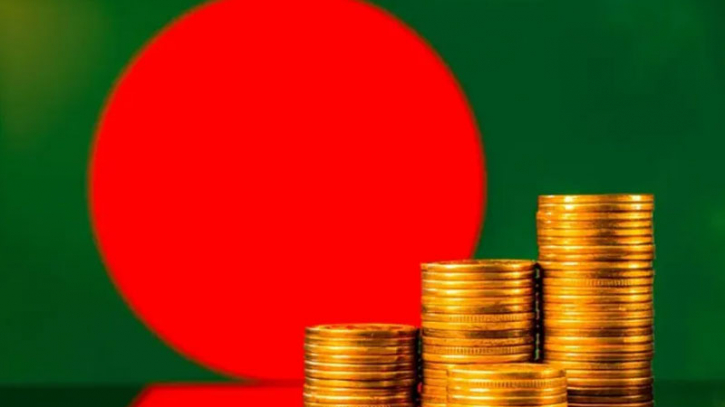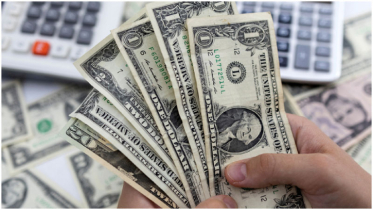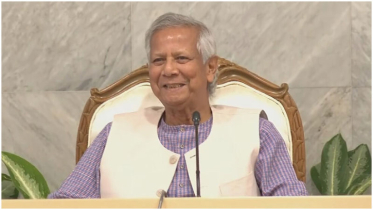Bangladesh economy: A case of 'development miracle'

Harvard University professor Joseph Noe defined soft power as a nation's power deriving from economic, political and cultural influence in contrast to military power. Recently, UK-based accounting firm Brand Finance released the Global Soft Power Index 2023 report – which said the brand value of Bangladesh increased by 37% from $371 billion in 2022 to $508 billion in 2023.
Bangladesh has become the fastest-growing brand nation in the world. That is, the brand value of Bangladesh increased the most last year. Bangladesh is followed by Uzbekistan (32%), Azerbaijan (30%), United Arab Emirates (24%) and Georgia (23%).
Bangladesh has the second highest brand value in South Asia, right after India, which is more than twice that of Pakistan and 10 times that of Sri Lanka. The report specifically states that Bangladesh is an example of unprecedented economic development and an inspiring model of poverty eradication as declared by the World Bank.
A few days ago, Boston Consultative Group, one of America's largest management consulting firms, published a special report on Bangladesh under the title "The Trillion Dollar Prize." During 2016-2021, Bangladesh's average GDP growth was 6.4%. This growth rate is twice the average of lower-middle-income countries and much higher than the world average (2.9%).
The key drivers for the economic growth of Bangladesh are increasing consumer spending, an emerging young workforce, high economic resilience and digital momentum, increasing government spending, rapid private sector investment growth, etc. After independence, government expenditure accounted for 85% of total investment, while private sector investment accounted for only 15%.
When the Eighth Five-Year Plan was drafted, private sector investment was 87% and public investment was 17%. One thing is clear – the economy of Bangladesh is one of the most sustainable economies in the world. During the global financial crisis of 2007-2009, Bangladesh's annual growth rate was 5.5%, which was higher than the average growth rate of India, Indonesia, the Philippines, Thailand and the world average.
During the Covid-19 pandemic, the growth rate of Bangladesh was 3.4%, whereas this rate was negative in most of the countries including the major economies of the world. The Center for Economics and Business Research (CEBR) projects the economy of different countries of the world every year, which is known as the "World Economic League Table".
And, according to their 2023 report, Bangladesh's GDP in 2037 will be $1628 billion (more than one and a half trillion), which means Bangladesh will be the 20th largest economy in 2037. In 2022 Bangladesh's position was 34th.
Even a decade ago, Bangladesh's success was considered "accidental." Despite being a country prone to natural disasters, unfavourable conditions and corruption at almost all levels, the recent economic and various social progress of Bangladesh is now considered a "Development Miracle" or "Development Labyrinth."
A similar opinion is found outside the academicians that despite being a poor country, Bangladesh is able to achieve progress in social indicators compared to other similar countries.
Since the second decade of the 21st century, qualitative changes in planning have played a major role in poverty alleviation and employment of the people of Bangladesh. The national five-year plan shifted its focus from the agriculture-based economy to the industrial and service sectors.
After independence, more than half of the country's GDP came from agriculture. Now agriculture contributes only about 12% of its GDP. On the other hand, the contribution of the industry increased from 8% to 35%.
In the last decade and a half, the government has consistently given top priority to agriculture. As a result, Bangladesh is now self-sufficient in food grains. Rice production almost quadrupled in the past 50 years despite the decline in cultivable land. Not only food grains but also fish, meat, eggs, milk and fruit production has increased to a large extent.
As a result of the government's agriculture-friendly policies, Bangladesh made outstanding contributions in the fields of agricultural mechanisation, agricultural machinery subsidies, agricultural research and innovation. Moreover, the entrepreneurial spirit at the grassroots level and the ability to adapt to the adverse environment have greatly accelerated the socio-economic development of Bangladesh.
The last decade can be called the golden age of Bangladesh's development. Bangladesh managed to achieve most of the Millennium Development Goals. As a result, Bangladesh was awarded more than a dozen international prestigious awards.
The country was promoted to a lower-middle income country and fulfilled the criteria for becoming a developing country twice in 2018 and 2021 from Least Developed Country status.
The government's macroeconomic policies played a key role in Bangladesh's transformation. Investment continues to grow as the economy remains stable in the long term. Bangladesh has the highest average gross domestic product or GDP in the last decade after China due to its stable economy.
Moreover, the government has taken up several important infrastructure-based mega projects to improve the business environment. Due to the provision of road connections and electricity facilities in almost every upazila, the growth centres and markets are now connected and the economic activities have become dynamic.
Recently, the Bloomberg news agency praised Prime Minister Sheikh Hasina for her timely reform measures to counter the negative impact of the global economic crisis and maintain economic stability.
Digital transformation is now underway in the country and there are 177 million mobile users. Internet user rate has increased by 70% in the last 10 years. The size of the digital economy grew from $1.7 billion in 2019 to $3.5 billion in 2022.
The government is also creating an enabling environment for the economy by tripling its spending in the last decade. Bangladesh is now the ninth-largest mobile market in the world. Bikash is the world's leading mobile financial service provider. With more than 650,000 freelancers, Bangladesh is the world's second-largest provider of online labour (15% of the world's total freelancers).
Under the guidance of the Prime Minister, the unprecedented Centenary Delta Plan 2100 is formulated to deal with climate change and manage agriculture and water resources. The National Social Security Strategy was formulated in the middle of the second decade of the 21st century with a desire to make the social security system more effective and dynamic.
The government is working to increase investment, create employment and alleviate poverty with the aim of making the country a developed and smart Bangladesh. Necessary physical and social infrastructure is rapidly developing to keep pace with the plan.
According to the Labor Force Survey 2016-17, 85% of our total employment is in the informal sector. In the case of women, this rate is about 92%. Entrepreneurship is now being created in villages and rural areas, and, as a result, small and medium industries are developing.
The expansion of the banking sector as well as microcredit has led to greater participation of people in economic activities. The latest Household Income and Expenditure Survey revealed that the participation of women in the workplace has increased from 36.3% to 42.68% in 2022-23.
The unemployment problem has come down from 4.2% to 3.6%. People are now risk-tolerant and investment-oriented due to the expansion of growth centres in rural areas and the modernisation of agriculture and infrastructure facilities. Multipurpose agricultural activities have expanded.
Along with economic progress, increasing social mobility is playing a controlling role in the development of Bangladesh. If there is no major social or political unrest in near future, this development will continue at an incredible pace.—The Business Standard
.png)




